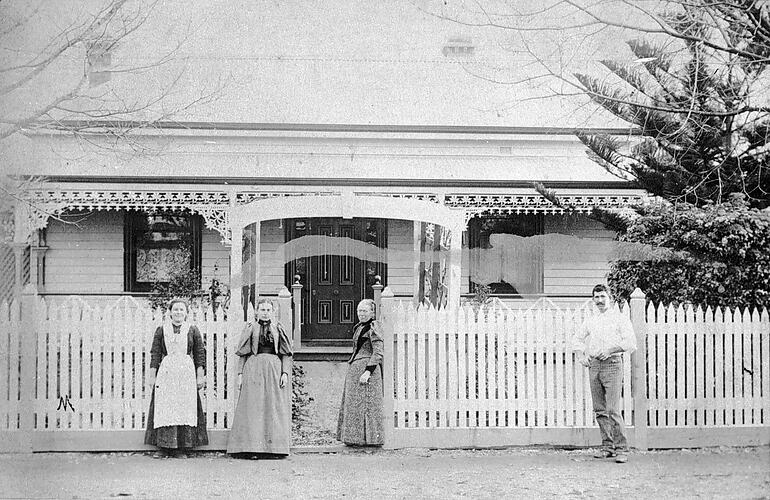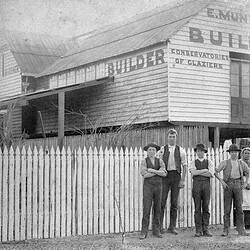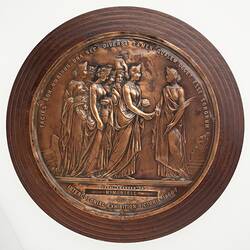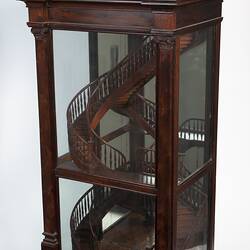Born in 1806 Heinrich Munzel was a master craftsman from Hanover, Germany. In 1835 he married Anna (nee Semmelhack) in Hamburg, and soon after the couple sailed to Pernambuco, Brazil, where Hanover artisans were in high demand by the new Portuguese rulers who wanted to restore the baroque architecture following the departure of the Dutch West Indies Company.
While in Pernambuco, Heinrich crafted a model double spiral staircase from Brazilwood which would have been used to establish his name and demonstrate his craftsmanship. Heinrich and Anna had three children in Brazil, Edward (born 1840), Caroline (born 1844), and Johanna (born 1846). They remained in Pernambuco until the political unrest of the Praieira Revolt in 1849 caused them to flee to Australia onboard the sailing ship "Laura", with Heinrich bringing the staircase model.
After arriving in Sydney on 6th March 1850, Heinrich established a business crafting billiard tables. He also changed his name from Heinrich to Henry.
In 1853 the Munzel family relocated to the Sandhurst (Bendigo) gold diggings, where Henry established an artisan workshop and crafted staircases and furnishings for the new buildings of Bendigo. While it was after the initial rush of 1851, the area was still being inundated with gold seekers. In the previous year, 1852, more than 5,000 diggers were arriving each week, with the number of miners on the fields reaching more than 40,000. The establishment of Munzel's workshop was well timed for the transition from canvas to more permanent buildings, and the desire to display the wealth created from the goldfields. Permanent buildings were erected in the Government Camp during 1853, and the land was surveyed and the first sale of town allotments occurred in 1854.
The Munzel family was part of the growing German settlement in Sandhurst. They were the third largest ethnic group on the goldfields, surpassed only by those of Chinese and British origin, and by 1861 they numbered 10,000. By 1864 there were already 13 German associations in Victoria's gold field towns. The streetscapes and major buildings of Sandhurst were strongly influenced by the work of German architects, including Mauermann, Nicolai, Bosselmann, Lehmann, Wilhelm C. Vahland and Robert Getzschmann. Vahland encouraged European artisans to immigrate to the Bendigo gold fields with the aim of creating 'the Vienna (Wien) of the south'. A German Common School was built in Bendigo in 1857, and in 1865 the Lutheran Christchurch School and Church in Rohan Street, was established after Lutheran pastor Friedrich Munzel, a relative of Munzel's, was requested to establish another. At one time the Commercial Bank of Sandhurst even over-printed its paper-money in German, no doubt for the convenience of the large German-speaking population in the district.
Munzel's 'talents were very highly regarded' and his business was responsible for furnishings and stairways in many of Bendigo's churches, schools and hotels, including the staircases in the City Family Hotel, the Central Camp Hill Primary School and the Fortuna Villa. He trained his son Edward, and his grandsons Heinrich and Charles, in the use of Redgum hardwood. The extended family became involved in the gathering and crafting of Murray River hardwoods from the Gunbower and Barmah forests.
In 1866 Munzel entered his staircase model in the Sandhurst Division of the Inter-Colonial Exhibition held in Melbourne, where it was one of nearly 3,000 exhibits on display from every Australian colony and New Zealand, New Caledonia, Mauritius and the Dutch East Indies. It was awarded an Honourable Mention at the exhibition, and Munzel was presented with a medallion and certificate of recognition.
References
Frank Cusack (ed), Bendigo, the German Chapter (Bendigo: The German Heritage Society, 1998), p. 191.
http://www.bendigo.ws/Our-History/People/German-Settlers.html
More Information
-
Keywords
Exhibitions: Melbourne Intercolonial, Australasian, 1866-1867, Immigration, German Immigration, German Communities, Gold Rushes, Goldfields, Woodworking
-
Authors
-
Article types





